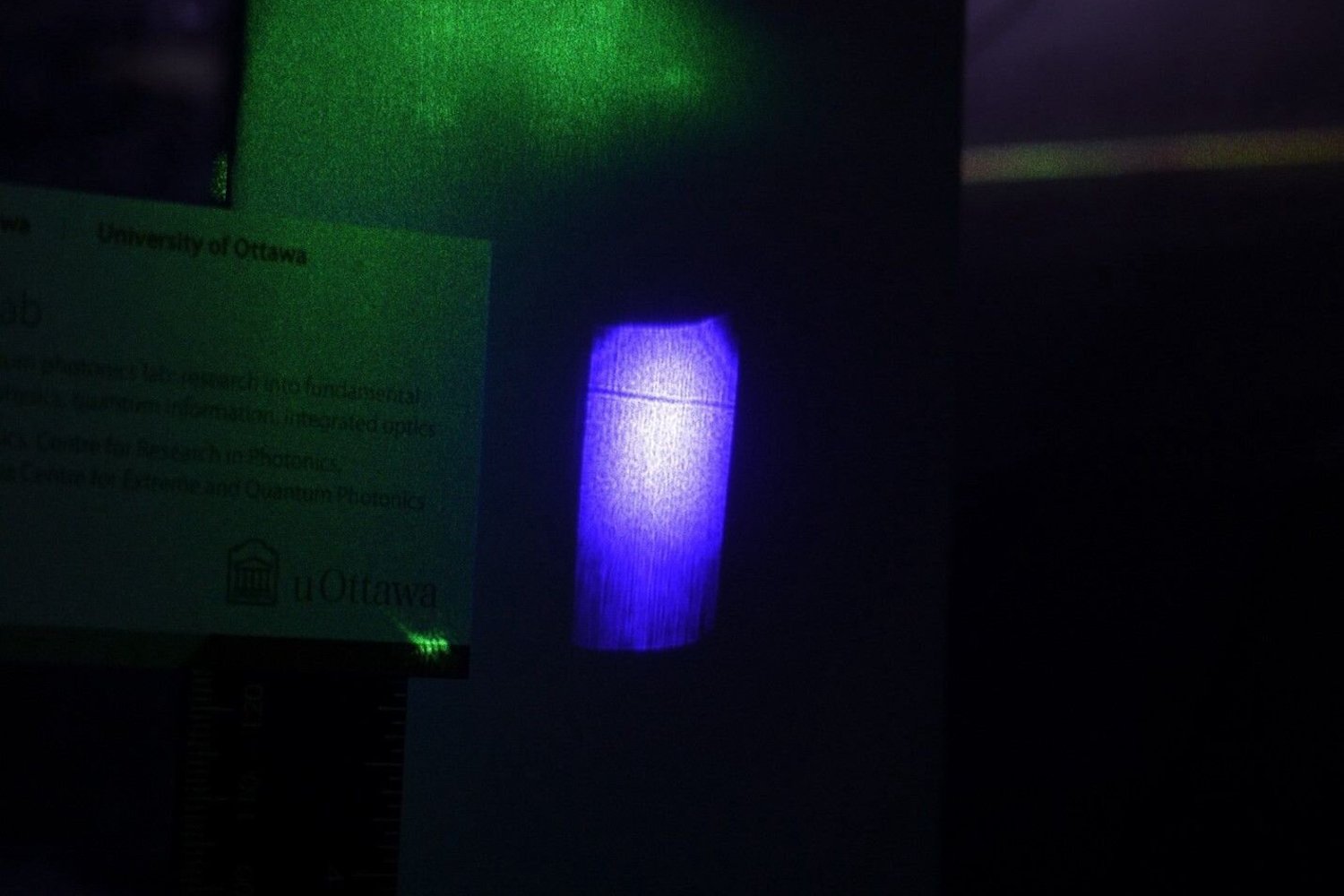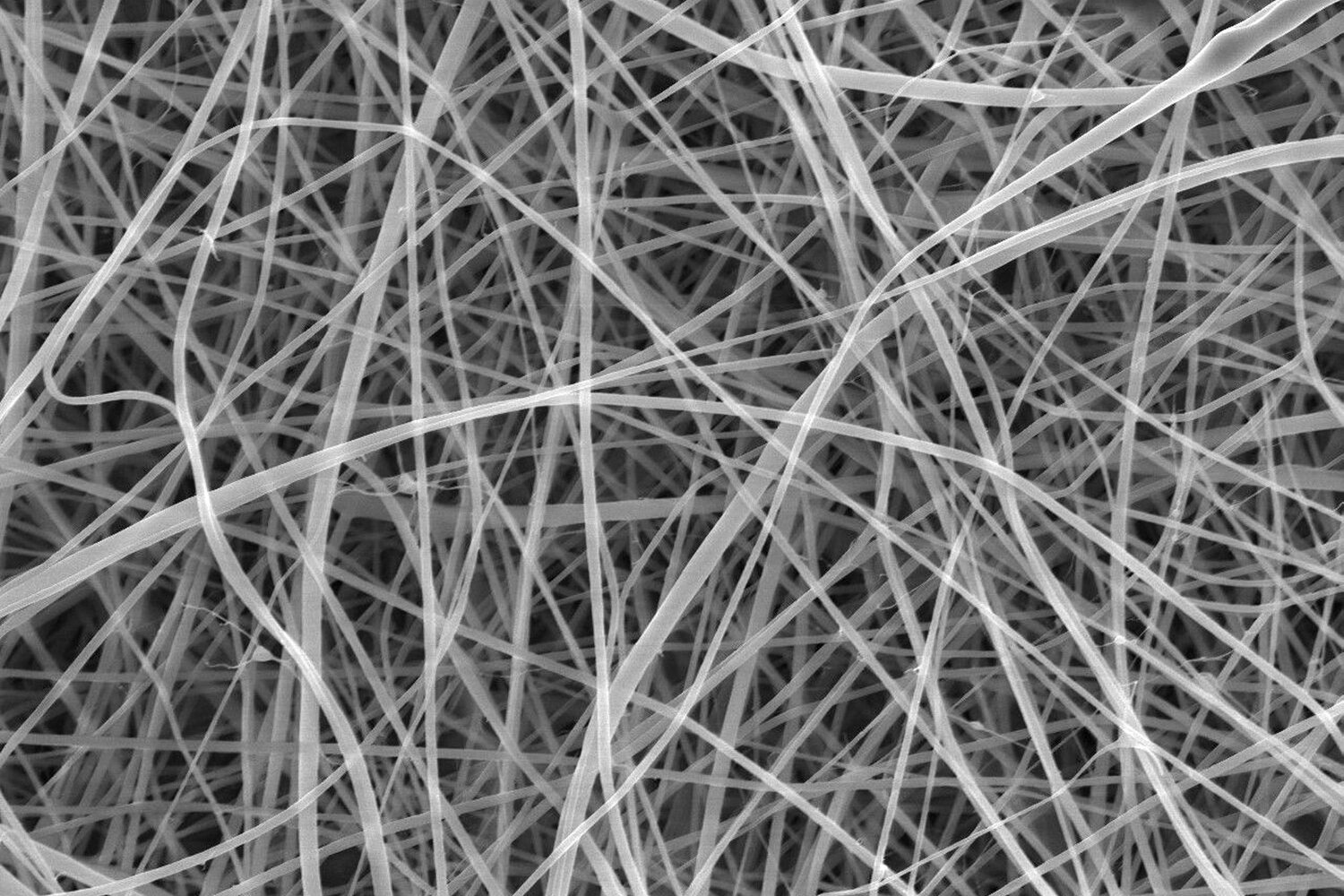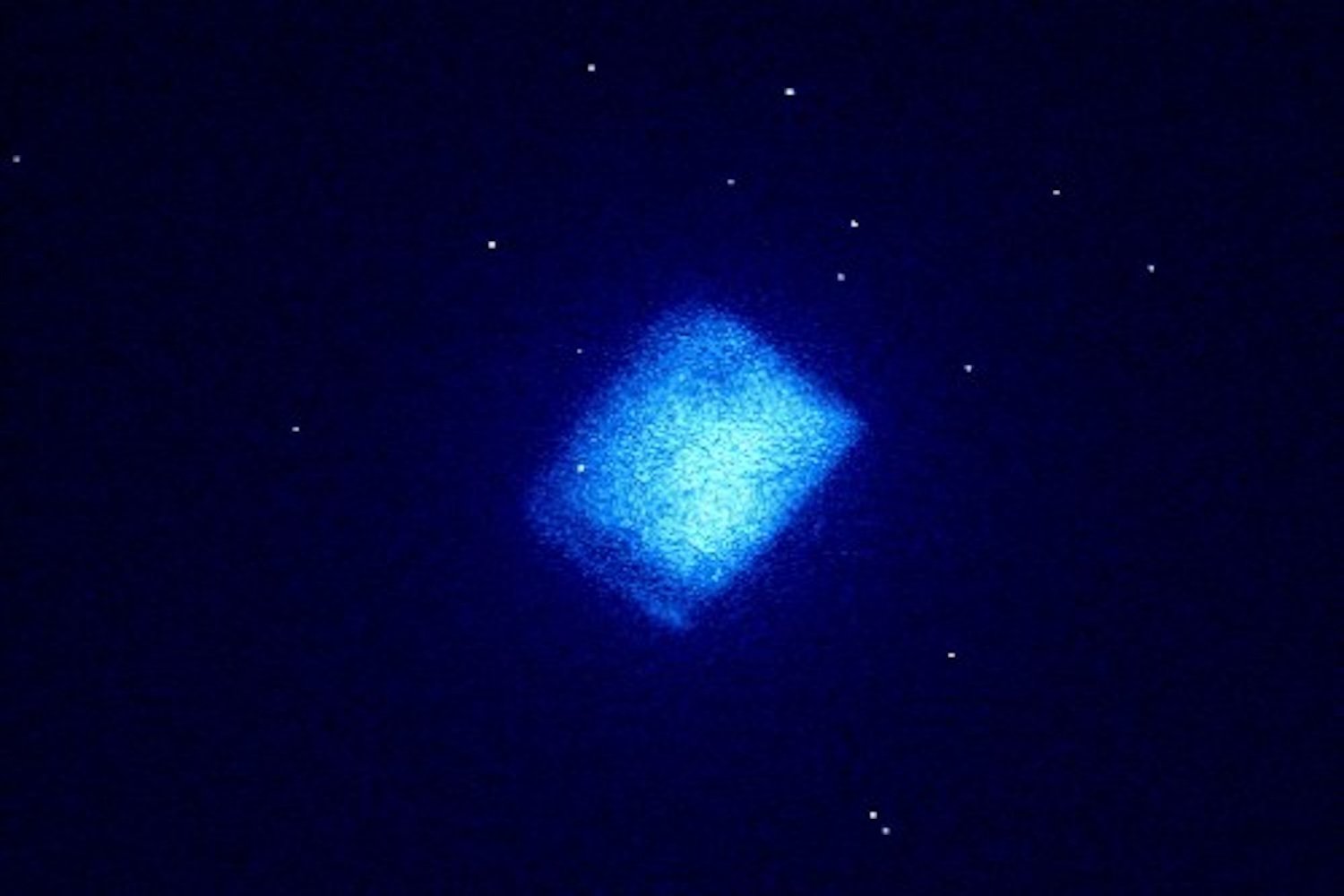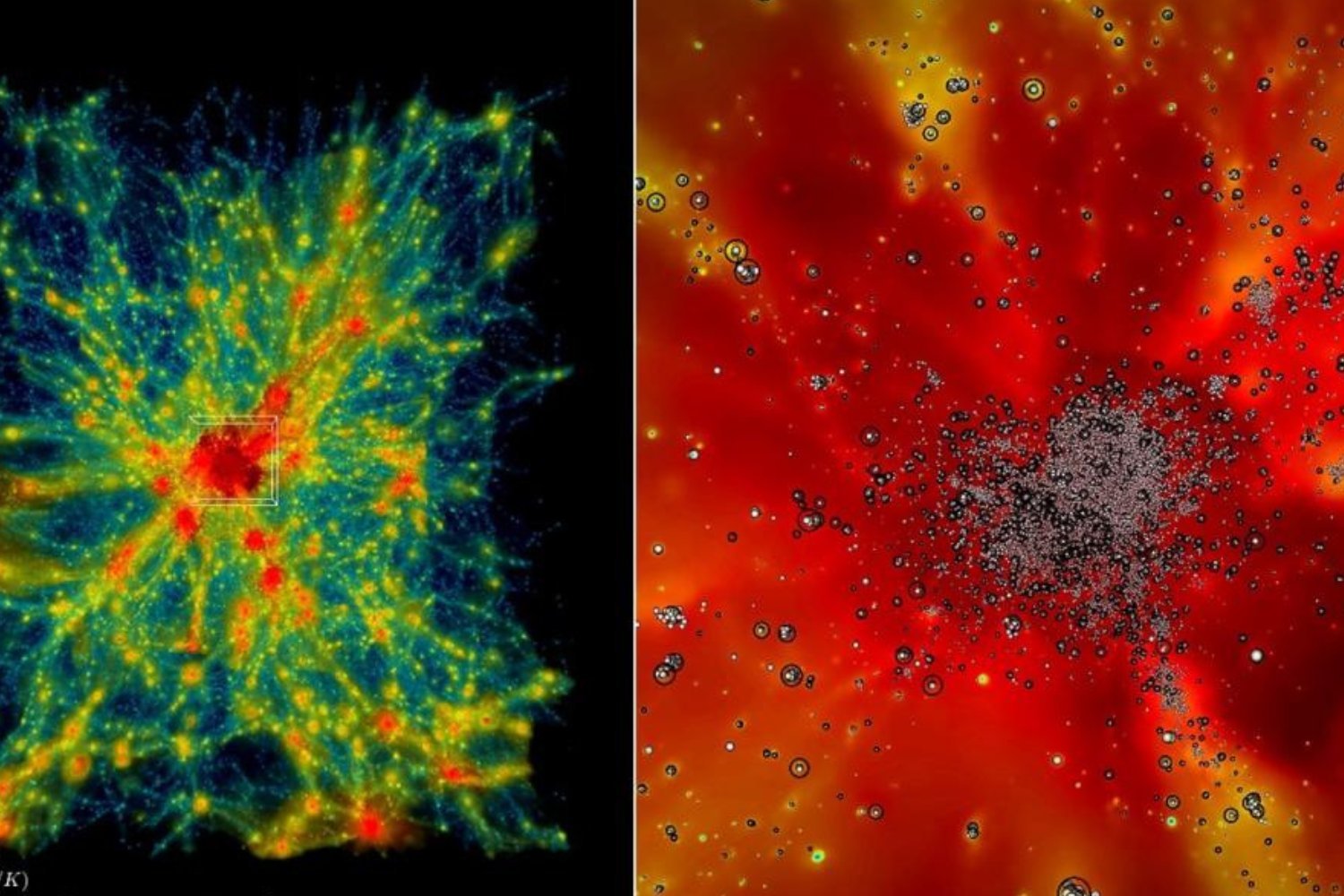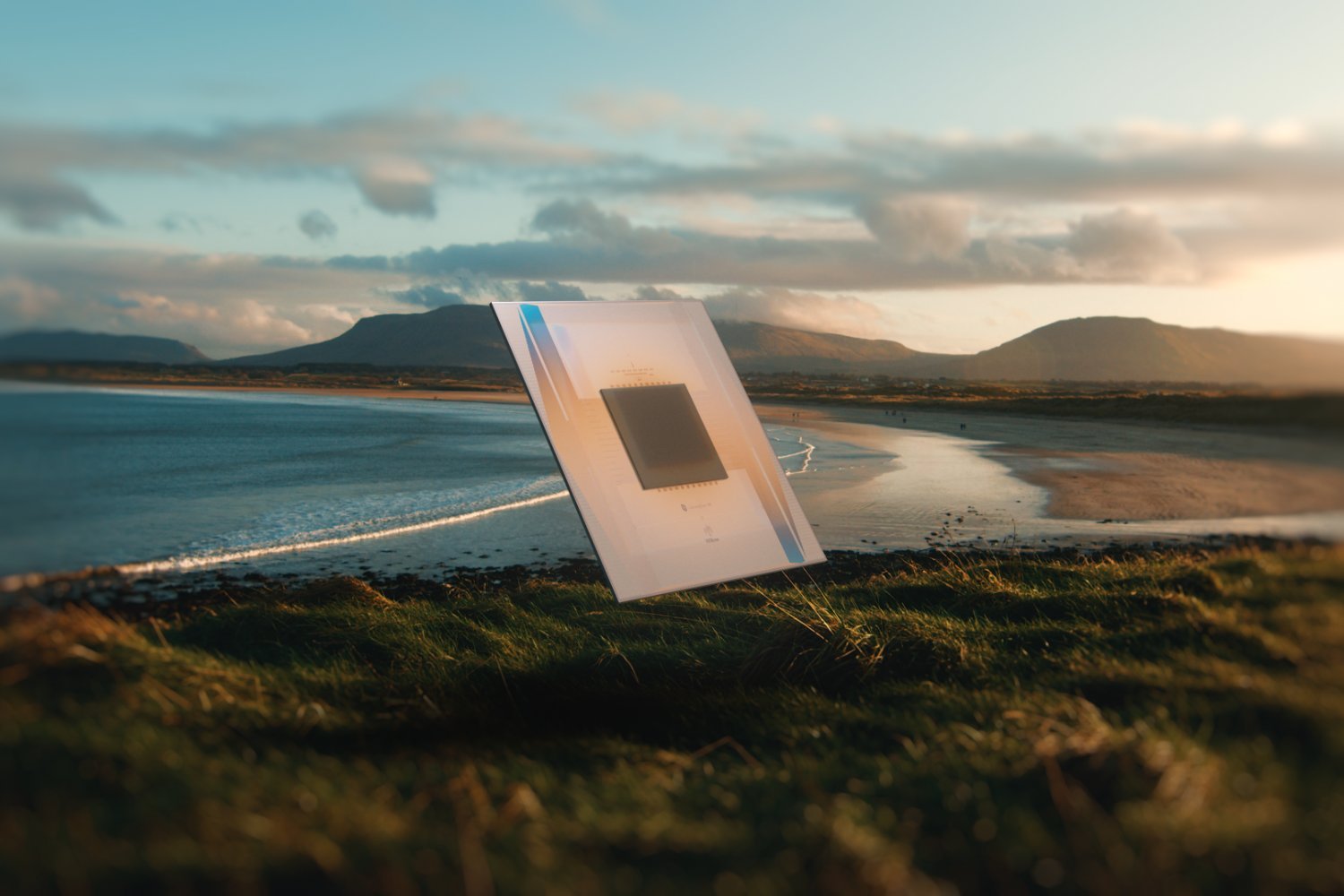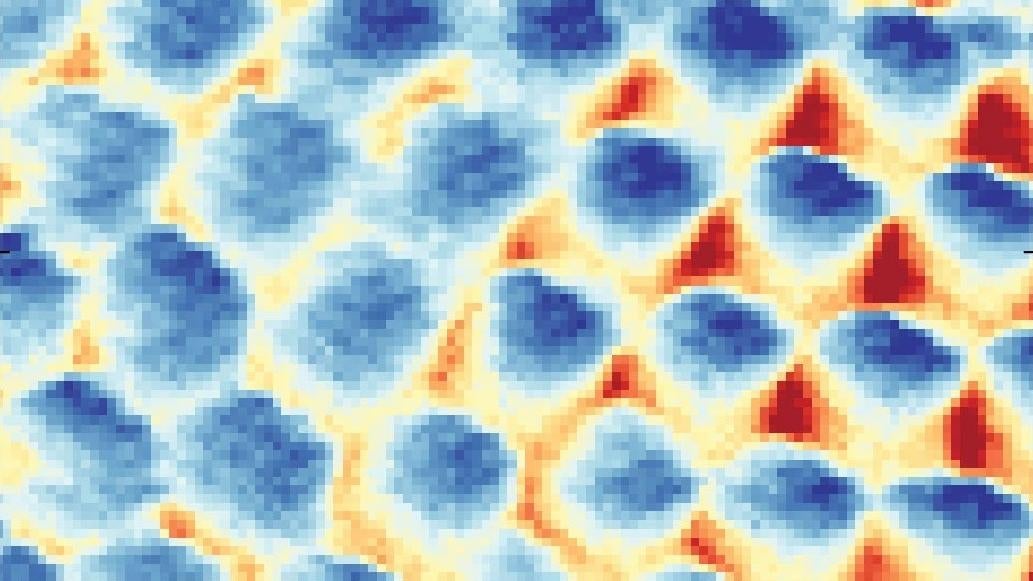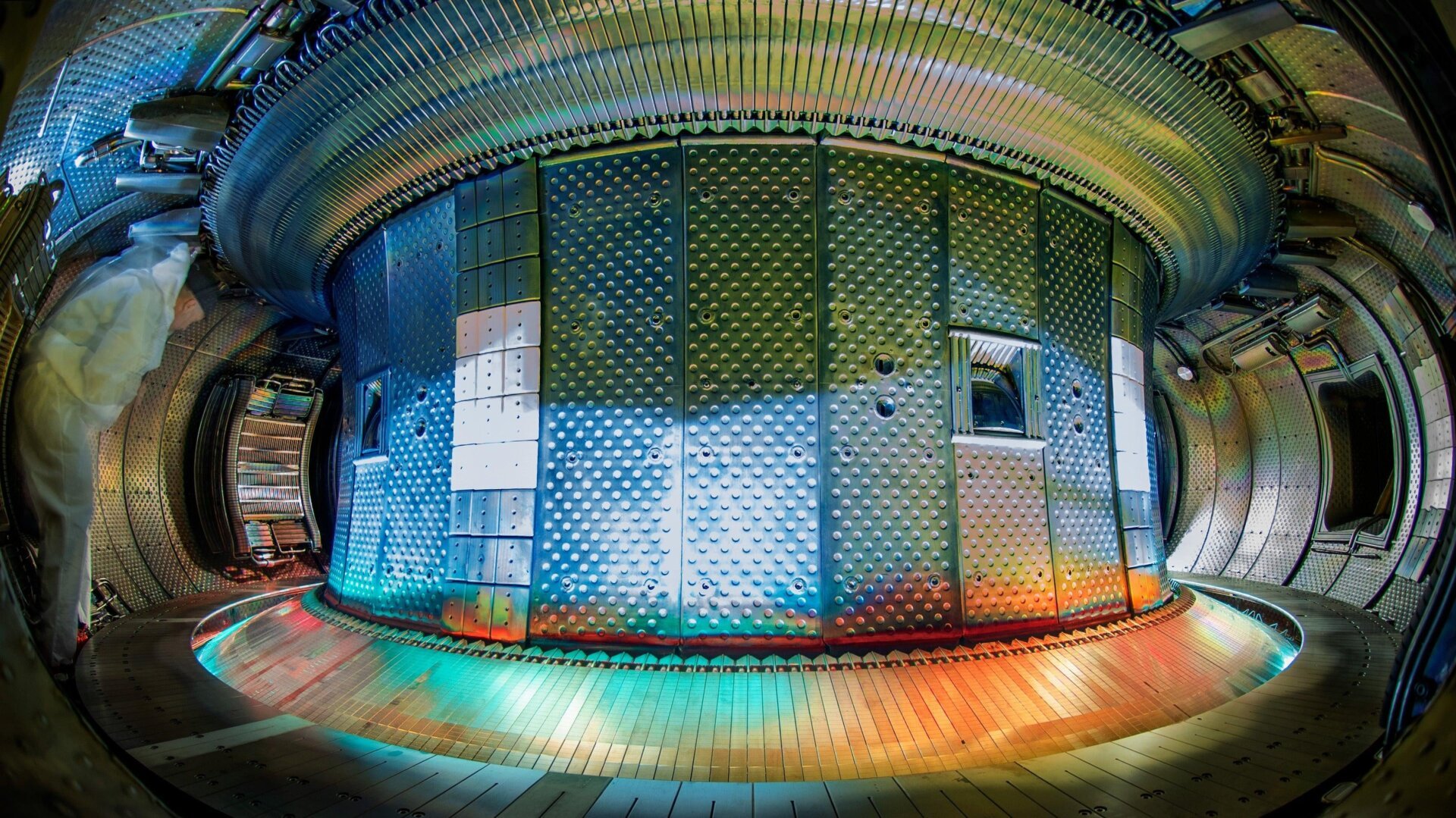Lasers, known for their intense and focused beams of light, have long been considered incapable of casting shadows. Light typically passes through other light without interaction. However, a recent study has challenged this fundamental understanding, demonstrating a groundbreaking optical effect where a laser beam can indeed cast a shadow, much like a solid object. This discovery could have significant implications for laser-based technologies like fiber optic communication used in HD televisions and high-speed internet.
This counter-intuitive phenomenon was observed by an international team of researchers from Canada and the U.S. Their findings, published in the journal Optica, detail how a laser can block other light and create a visible shadow. This challenges our very definition of what a shadow is and opens up new possibilities for light manipulation.
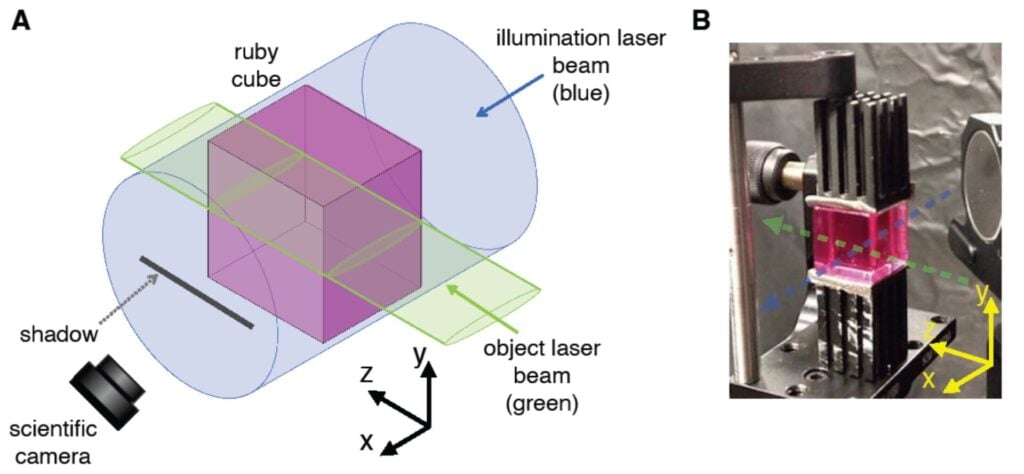 Credit: Abrahao et al.A laser beam can, under specific conditions, act like a solid object and cast a visible shadow. The shadow is seen here as a horizontal line across the blue background. (Credit: Abrahao et al.)
Credit: Abrahao et al.A laser beam can, under specific conditions, act like a solid object and cast a visible shadow. The shadow is seen here as a horizontal line across the blue background. (Credit: Abrahao et al.)
The research stemmed from a casual discussion about how some 3D diagrams depict lasers as solid cylinders, complete with shadows. The team decided to test this seemingly impossible concept in a laboratory setting. The experiment involved directing a green laser into a ruby crystal, simultaneously illuminating the crystal with a perpendicular blue laser. The high-intensity green laser altered the ruby crystal’s properties, enabling it to absorb more of the blue laser light in specific areas, effectively creating a shadow in the shape of the green laser beam.
This observed phenomenon fulfilled the traditional criteria of a shadow: it was visible to the naked eye, conformed to the surface upon which it was cast, and precisely mirrored the shape and position of the green laser. The researchers also quantified the shadow’s contrast relative to the laser’s power, achieving a maximum contrast comparable to the distinct shadow of a tree on a sunny day.
Laser shadow contrastResearchers measured the contrast of the laser shadow relative to the laser’s power.
However, the “laser shadow effect” relies on the ruby crystal as a mediator. This raises the question of whether the photons within the green laser are directly blocking the blue light, or if the ruby crystal’s atoms are playing a crucial role in the shadow formation. This aspect remains an area of ongoing investigation.
Despite the open questions, this discovery significantly expands the potential for controlling one laser beam with another. While the practical applications may not be immediately apparent in daily life, this groundbreaking research certainly invites us to rethink our understanding of light and shadow. It also adds a new layer of scientific accuracy to the depiction of lasers in science fiction, suggesting that laser duels might indeed involve shadows, albeit under very specific conditions.



